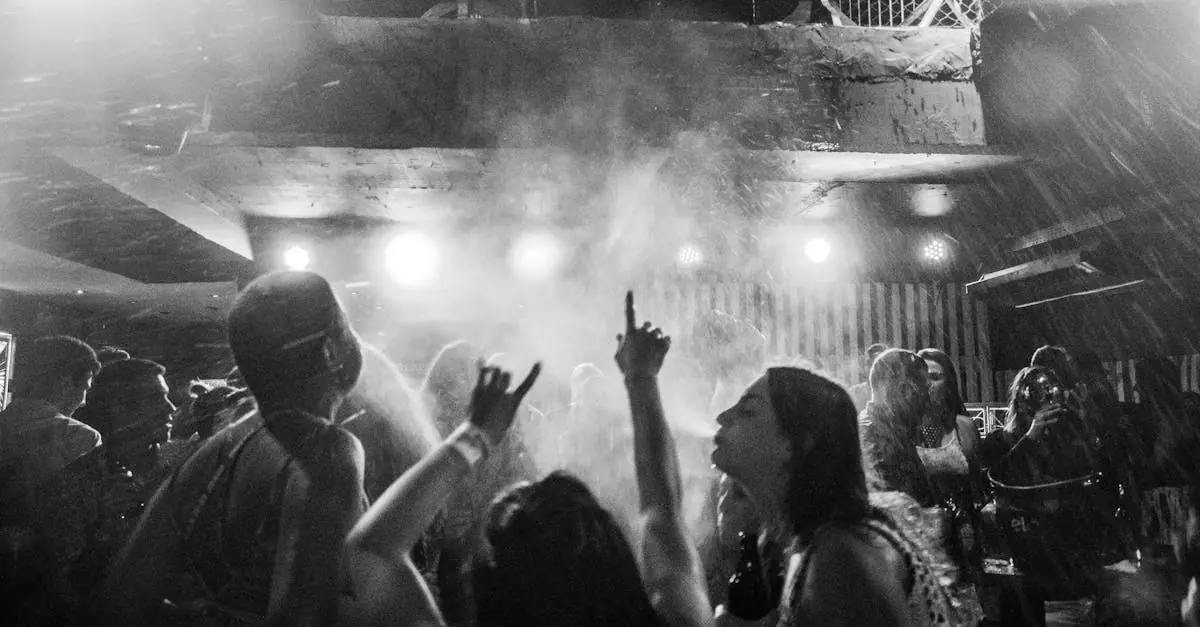Table of Contents
ToggleIn a world where superheroes and wizards reign supreme, fandom culture has become a vibrant tapestry of passion and creativity. From comic conventions buzzing with excitement to online communities bursting with memes, fans have transformed their obsessions into a way of life. It’s not just about liking a show or a movie; it’s about diving headfirst into a universe where every detail matters and every fan has a story to tell.
Imagine a place where dressing up as your favorite character is an everyday occurrence and debating plot twists is a competitive sport. That’s the magic of fandom culture. Whether you’re a casual viewer or a die-hard devotee, there’s something undeniably thrilling about being part of a community that shares your enthusiasm. Join us as we explore the fascinating world of fandoms, where the lines between reality and imagination blur, and where every fan is a hero in their own right.
Overview of Fandom Culture
Fandom culture encompasses a wide range of communities unified by shared interests. Fans often form deep emotional connections to characters, narratives, and worlds, fostering a sense of belonging. Through social media, they create vibrant dialogues, sharing theories, fan art, and personal experiences.
Comic conventions exemplify the excitement of fandom. These events attract thousands, offering panels, merchandise, and opportunities for fans to meet creators and fellow enthusiasts. Dressing as iconic characters, or cosplaying, has become a prominent aspect, with competitions highlighting creativity and craftsmanship.
Online platforms play a crucial role in fandom culture. Forums, blogs, and social media groups allow global interactions. Fans exchange fan fiction, discuss plot twists, and analyze character arcs, enriching their understanding of the material. These exchanges transform passive viewing into a participatory experience.
Many fandoms cultivate a unique lexicon. Terms like “shipping,” “headcanon,” and “canon” have become commonplace, enhancing community bonds. Shared language not only strengthens connections but also deepens appreciation for the source material.
Inclusivity marks the evolution of fandom. Diverse voices contribute to richer narratives, allowing representation across races, genders, and orientations. Fans advocate for underrepresented stories, challenging creators to expand their horizons.
Fandom culture thrives on creativity, collaboration, and community. Its dynamic nature reflects ongoing shifts in society while encouraging exploration and connection within beloved universes.
Key Elements of Fandom Culture
Fandom culture thrives on enthusiasm and creativity, central to its existence. It encompasses various elements that strengthen community ties and encourage unique self-expression.
Community Building
Fans unite through shared interests, forming diverse communities. Online forums and social media platforms serve as popular meeting spaces for exchanging ideas and building friendships. Events such as comic conventions provide in-person opportunities for fans to connect, engage, and celebrate their passions. Initiatives like fan clubs foster deeper relationships, enabling members to collaborate on projects. Additionally, the shared experience of attending screenings or participating in watch parties heightens the excitement, reinforcing a sense of belonging among individuals who share similar interests.
Creative Expression
Creative outlets play a crucial role in fandom culture, enabling fans to express themselves in innovative ways. Fan art, fan fiction, and cosplaying showcase personal interpretations of beloved characters and stories. Many fans produce unique content, contributing to an ever-expanding body of work that celebrates the source material. The act of creation fosters collaboration, inspiring others to take part in the vibrant culture. Participating in challenges or sharing creations online not only enhances visibility but also nurtures appreciation within the community, empowering fans to showcase their talents.
Types of Fandoms
Fandom culture encompasses various types of fandoms that reflect diverse interests. These communities unite enthusiasts around specific themes, creating shared experiences and connections.
Media-Based Fandoms
Media-based fandoms revolve around movies, television shows, books, and video games. Fans often engage through discussions, analyze characters, and create fan art or fan fiction. Popular media fandoms include those for franchises like “Star Wars,” “Harry Potter,” and “Marvel” superheroes. Each offers unique worlds rich with lore, allowing fans to immerse themselves deeply. Fans participate in events such as conventions where they can meet creators and fellow aficionados. Platforms like Tumblr and Reddit provide spaces for collaboration, idea sharing, and lively debates, enriching the fan experience.
Sports Fandoms
Sports fandoms showcase passionate support for teams and athletes across various sports. Followers commemorate victories and celebrate team histories with enthusiasm. Examples include dedicated supporters of NFL teams, NBA franchises, and international soccer clubs. Game days ignite camaraderie among fans, whether at stadiums or home gatherings. Social media platforms amplify these connections by allowing fans to share highlights, opinions, and moments in real time. The pride fans exhibit for their teams reflects a commitment shaped by collective history and culture.
The Impact of Fandom Culture
Fandom culture significantly influences social dynamics and economic landscapes.
Social Connections
Fans forge strong connections through shared interests, creating a sense of belonging. Online platforms allow individuals to engage actively, share insights, and participate in discussions. Comic conventions serve as hotspots for meeting like-minded enthusiasts, where friendships often blossom. Communities thrive as members collaborate on projects, from fan art to cosplay. The diverse representation within fandoms enhances empathy, as fans learn from each other’s experiences and perspectives. By celebrating unique viewpoints, fandom culture promotes mutual understanding and respect among participants.
Economic Contributions
Fandom culture drives substantial economic activity, especially within the entertainment sector. Merchandise sales for popular franchises result in billions in revenue. Licensed products, including clothing, toys, and collectibles, cater to dedicated fans seeking ways to celebrate their passions. Comic conventions generate local economic boosts, attracting thousands of attendees who spend on travel, accommodations, and food. Additionally, fan-driven content like crowdfunding initiatives supports independent creators and projects. This vibrant culture contributes positively to economies while nurturing creativity and innovation in storytelling.
Challenges in Fandom Culture
Fandom culture faces several challenges that can impact community dynamics and individual experiences.
Toxicity and Conflict
Toxic behavior appears frequently within fandoms. Rivalries between different fan groups sometimes escalate into heated disputes. Harassment directed at creators and fellow fans can discourage participation. It’s not uncommon for discussions about beloved characters or storylines to turn contentious, leading to exclusion or hostility. Such negativity can create an environment where fans feel unwelcome, diverting attention from celebration to conflict. Addressing and mitigating toxicity is vital in fostering healthier fan interactions and inclusive spaces.
Commercialization
Commercialization poses another significant challenge. As major franchises monetize their intellectual properties extensively, it can shift the focus from creative expression to profit motives. Merchandise becomes ubiquitous, sometimes overshadowing the core narratives and character connections fans cherish. This tendency can alienate portions of the community who feel that commercialization dilutes the authenticity of their fandom experience. Maintaining a balance between commercial interests and genuine fan engagement remains essential for preserving the culture’s integrity.
Fandom culture represents a dynamic intersection of creativity and community. It thrives on shared passions that foster deep connections among fans. Whether through spirited discussions or creative expressions, individuals find their place within these vibrant communities.
As fandoms continue to evolve, they invite new voices and perspectives, enriching the narratives they celebrate. While challenges exist, the resilience and enthusiasm of fans ensure that this culture remains a powerful force for connection and creativity. Embracing the joys of fandom can lead to unforgettable experiences and lasting friendships in a world where imagination knows no bounds.





